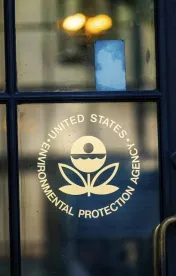After unexpected controversy earlier in the year, on December 15, 2022 the U.S. Environmental Protection Agency (EPA) issued a Final Rule unambiguously recognizing the ASTM International Standard E1527-21 for Phase I Environmental Site Assessments (ESAs), with an effective date of February 13, 2023.[1] EPA’s express endorsement of the standard as meeting the requirements of the All Appropriate Inquiry (AAI) Rule[2] is essential to ensuring that the Phase I ESA fulfills its fundamental purpose: protection for prospective purchasers (and lessees) of property from liability for pre-existing contamination by petroleum products or hazardous substances regulated under the Comprehensive Environmental Response and Cleanup Liability Act (CERCLA).[3]
ASTM E1527-21 distills statutory, regulatory and evolving common law requirements for AAI into clear, practical steps for investigating and assessing the environmental risks associated with a property prior to a new party acquiring an interest in it. A Phase I ESA carried out in compliance with ASTM standards provides a degree of assurance for buyers, financiers and insurers of real property that liability for contamination—both known and unknown—will be limited. In essence, these parties are protected from any liability for historic contamination under CERCLA, remaining potentially liable only for new contamination or acts that worsen the preexisting contamination. This is important, as being tapped as a “potentially responsible party” as an owner or operator under CERCLA can result in huge costs.
ASTM standards are designed to reduce uncertainty for environmental professionals working to meet often vague or imprecise legal standards. For that reason, it came as a shock to many when rather than replacing previous ASTM Phase I guidance with the new standard, EPA opted in March 2022 to include both in federal regulations, thereby increasing uncertainty. Following an immediate and robust round of comments by stakeholders, and in particular ASTM members, EPA withdrew its initial rule. The new rule updates 40 CFR Section 312.11 to confirm that E1527-21 “may be used to comply” with regulations defining AAI starting February 13, 2023. One year later, on February 13, 2024, ASTM E1527-21 will become the sole standard for carrying out a Phase I ESA of commercial and industrial properties in the United States.[4] During that interim year, both the current ASTM standard, E1527-13, and the new E1527-21 will be valid to meet the requirements of the AAI Rule.
The most important change in ASTM E1527-21 relates to the function of a Phase I ESA in due diligence beyond the requirements of AAI. The new guidelines provide for an optional review of emerging contaminants that are not within the scope of the AAI Rule’s requirements:
There are some substances that non-environmental professionals and others may assume to be hazardous substances that are not defined (or not yet defined) as hazardous substances under CERCLA through interpretation by EPA regulations and the courts. These substances may include: (1) some substances that occur naturally or through biological digestion (for example, methane), and (2) substances about which human understanding is evolving (for example, per- and polyfluoroalkyl substances, also known as “PFAS”). These and any other “emerging contaminants” . . . are not included in the scope of this practice. Some of these substances may be considered a “hazardous substance” (or equivalent) under applicable state laws. In those instances, where a Phase I Environmental Site Assessment is performed to satisfy both federal and state requirements, or as directed by the user of the report, it is permissible to include analysis and/or discussion of these substances[.]
This new language bolsters the function of a Phase I ESA as a framework that supports a much broader review of environmental conditions and risks than is strictly required under the AAI Rule. As the passage indicates, ASTM1527-21 does not require assessment of substances that potentially pose a risk of contamination or exposure but that do not fall within the scope of CERCLA, including naturally-occurring substances and state-listed hazardous substances. It has long been standard practice to expand Phase I ESAs to include the most common of these substances such as lead and asbestos. This express identification of “emerging contaminants” makes it likely that a much broader range of substances will be routinely identified and evaluated.
PFAS, which are expressly mentioned in the new standard, may be the most prominent example of an emerging contaminant that is increasingly likely to be evaluated as a requirement for insurance or financing purposes. PFAS are pervasive, found in soil and groundwater at levels well above regulatory thresholds that have been and will be adopted by many states. PFAS also can be costly and difficult to remediate. Establishing that a new owner/operator has not contributed to any existing PFAS on a property at the time of acquisition can be a valuable outcome of a Phase I ESA. EPA has announced its intention to list two of the most common PFAS as hazardous substances regulated under CERCLA in late 2023, thereby bringing some PFAS within the mandatory scope of a Phase I ESA under the AAI Rule.[5] Because there are thousands of PFAS that still will be beyond the scope of the AAI Rule, including many that are regulated by many states, the expanded optional scope of E1527-21 will be important.
Other key changes include:
-
Expanded definition of REC. The new definition of “recognized environmental condition” includes the “likely presence” of CERCLA-listed hazardous substances or petroleum products, significantly expanding its scope. Under the previous standard, only the confirmed presence of these substances would result in a REC.
-
Title report review methods. ASTM E1527-21 provides additional details on two methods for the ESA user to carry out the requirement for reviewing title reports and/or court records for recorded activity/use limitations (AULs) or environmental liens, in addition to a search of institutional control and engineering control registries.
-
Expanded historical review. The previous standard required a search of standard historical information sources to determine past uses of the subject property, including interviews of prior owners and occupants, aerial photographs, fire insurance maps, local street directories, historical topographic maps, and prior site assessments. ESAs conducted under E1527-21 will extend this historical review to adjoining properties.
-
Verifiable dates. New requirements specify that dates must be included in Phase I reports, and reaffirms that certain elements must be completed within 180 days of the date of closing (site reconnaissance, government record search and review, environmental cleanup lien search, owner/operator interviews, consultant’s declaration) and all others within one year.
The long-term value of ASTM standards for Phase I ESAs is the weight they carry with regulators and in court. EPA’s recognition of E1527-21 reflects the importance of compliance with ASTM standards for deterring regulatory action and protecting against potential liability. ASTM standards establish clearly identifiable, “bright line” markers for determining whether AAI requirements have been met. At the same time, these markers make it easier to spot an ESA that falls short.
During this period of transition to the new ASTM standard, when regulators and courts will be cognizant of the more detailed and specific requirements of the new standard, careful legal review and a strategic approach to performing a Phase I ESA will be critical. For example, the addition of “likely” to the definition of a REC results in significantly more discretion in their identification and increases the importance of careful review. New “optional” out-of-scope elements also raise difficult questions, including when and whether to look for substances that could result in cleanup requirements or other risks. Legal counsel can help to guide an environmental site investigation while preserving the confidentiality of any work product and ensuring full compliance. They also can assist in determining the appropriate scope for a Phase I ESA to support financing or insurance coverage within the broader and more flexible parameters established by E1527-21.
The changes adopted with ASTM E1527-21 include new options and pose new questions, and will likely increase the cost of environmental diligence. Implementing a strategic approach to the performance of AAI can ensure that a Phase I ESA not only minimizes the risk of future liability for contamination, but also provides valuable insight into the overall condition of a property, reveals hidden problems or restrictions, and bolsters investor confidence.
FOOTNOTES
[1] See 87 Fed. Reg. 76578-76581 (December 15, 2022). For the E1527-21 standard, see www.astm.org.
[2] See 40 CFR Part 312.
[3] See 42 U.S.C. §9607(r); 42 U.S.C. §9601(40).
[4] Regulations also reference ASTM E2247-16, which sets forth a Phase I ESA process that meets AAI requirements for forestland or rural property.
[5] See 87 Fed. Reg. 54415-54442 (September 6, 2022).




 />i
/>i

